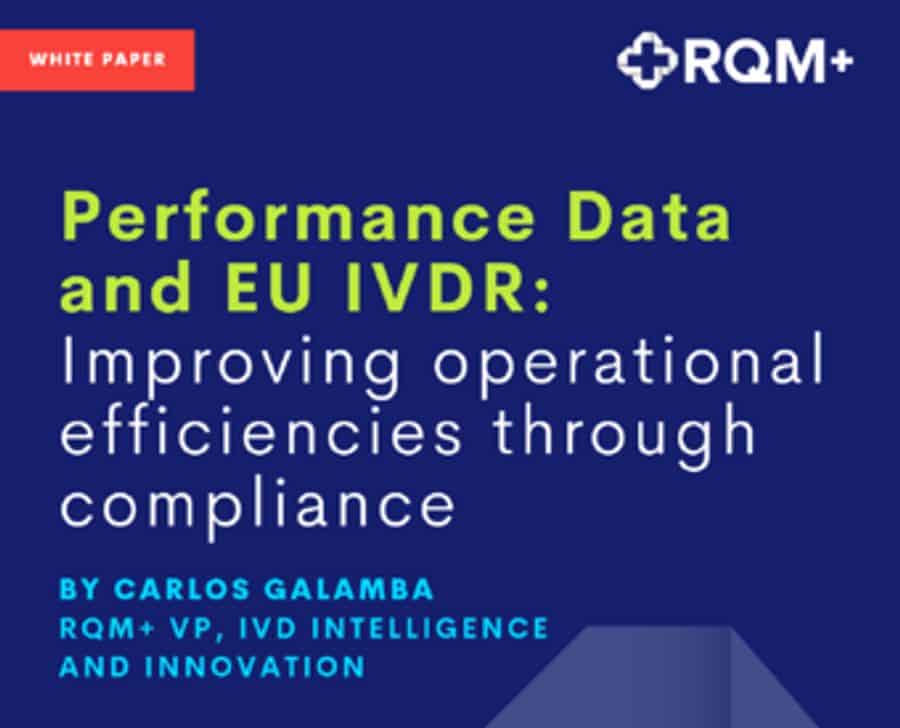RQM+ releases report on clinical evidence required for suppliers to comply with EU IVDR rules

A new white paper from global regulatory and quality consulting firm RQM+ provides clarity on the clinical evidence required for medical equipment suppliers to comply with the EU In Vitro Diagnostic Regulation (IVDR), and spotlights synergies between EU and US requirements.
According to RQM+ it is imperative that manufacturers do not underestimate the time required to source the right clinical evidence for their products. As the risk to individual and public health increases with each device classification under the IVDR, it states that the corresponding conformity assessment requirements also increase.
This new rigorous risk-based classification means that an estimated 84 per cent of IVDs now fall under Notified Body (NB) scrutiny compared to the mere seven per cent under the directive.
To ensure that IVDR compliance is as efficient as possible, RQM+ is urging manufacturers to check whether they can leverage existing clinical evidence from IVD submissions to the US Food and Drug Administration.
If a company sells diagnostic products that are 510(K) cleared in the USA, then they may have a head start. It is likely they have already obtained a significant proportion of the supporting testing and performance data that is required to comply with some of the IVDR requirements.
This new white paper from RQM+, provides advice on how to identify synergies, as well as a table that clearly presents areas where these synergies may be found.
This is an addition to a detailed summary of clinical evidence requirements under the IVDR, including a checklist of questions to assess whether scientific validity, analytical performance and clinical performance have been sufficiently addressed in their Performance Evaluation Report (PER).
Carlos Galamba, Vice President, IVD Intelligence and Innovation, said, “The EU Commission’s recent proposal could mean a sigh of relief for some IVD manufacturers with existing directive products on the market.
“If approved, it would not change the date of application, but it would allow for a progressive roll-out to the IVDR based on device classification, with a shorter timeframe for higher risk devices.
“However, there is no room for complacency. Notified Bodies will not engage with companies unless their technical documentation, including performance data is complete.
“I cannot stress enough how important it is for IVD manufacturers to review whether they have enough clinical evidence, to give themselves enough time to take remedial action. We hope that this new paper will help manufacturers to plan efficiently for compliance, by making full use of what is already available.”
RQM+ recently created a new tool that allows mobility and access manufacturers to easily navigate the EU Medical Device Regulation (MDR). The tool enables quick searches by topic, chapter, article and search term, saving regulatory professionals administrative time.


